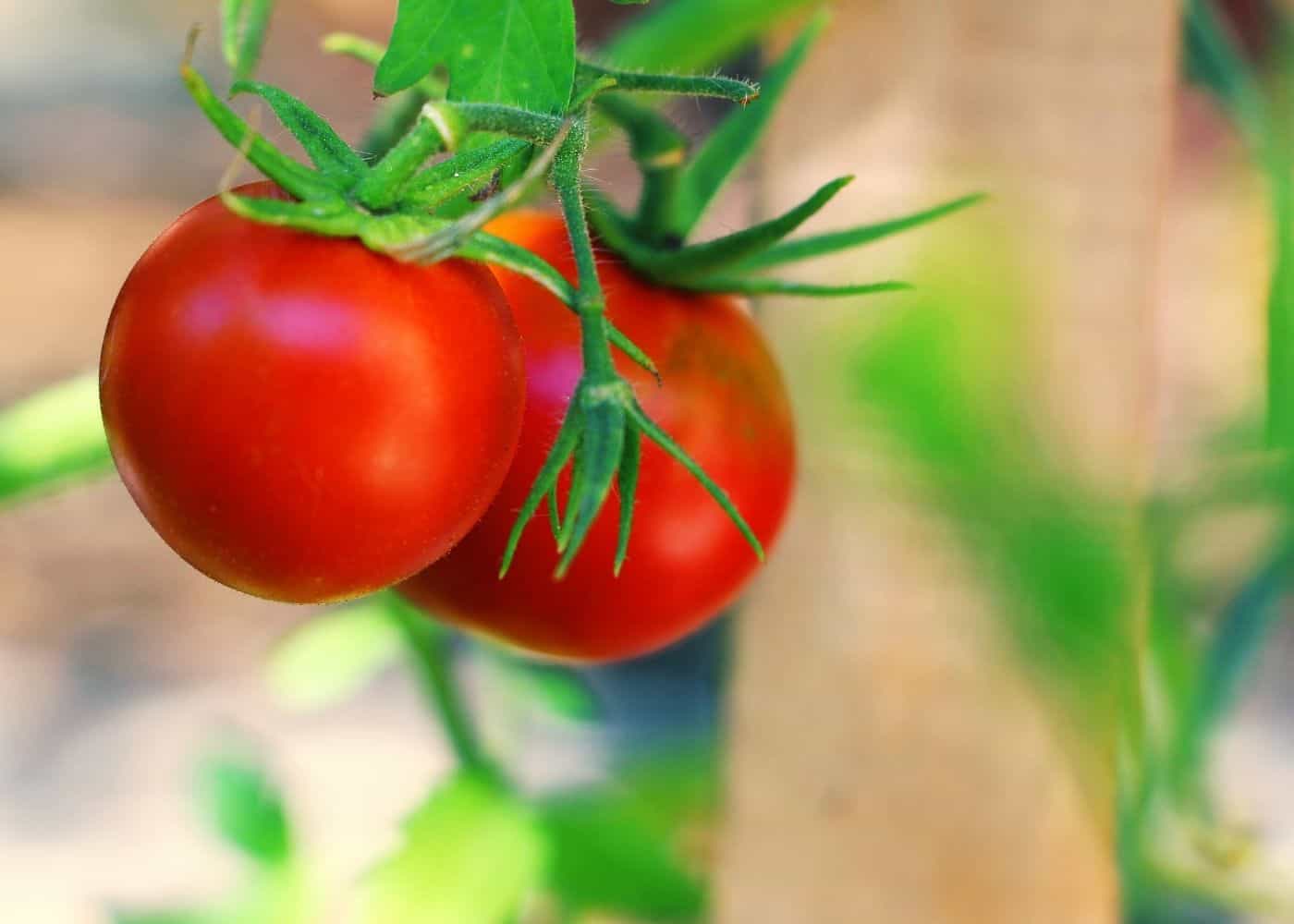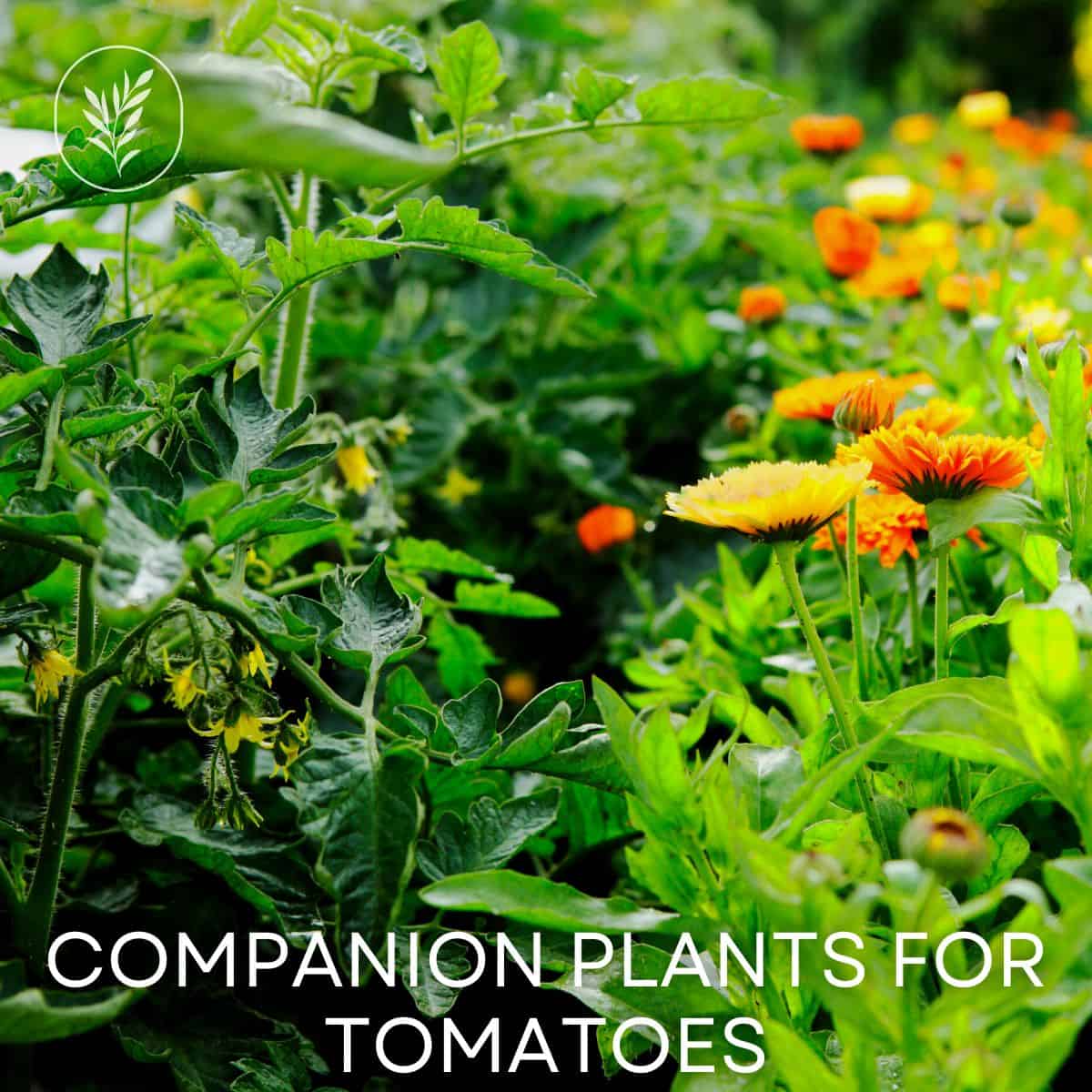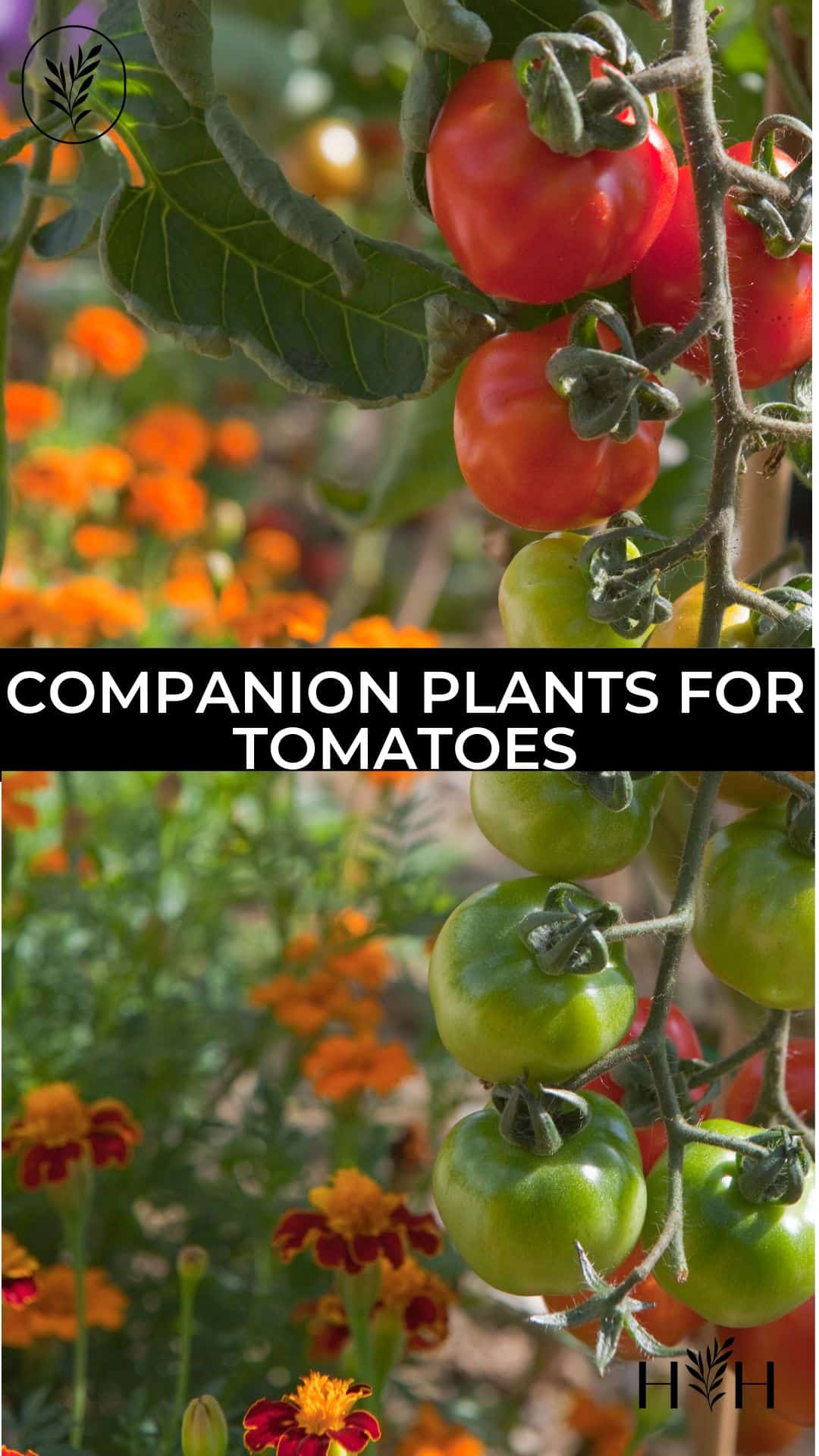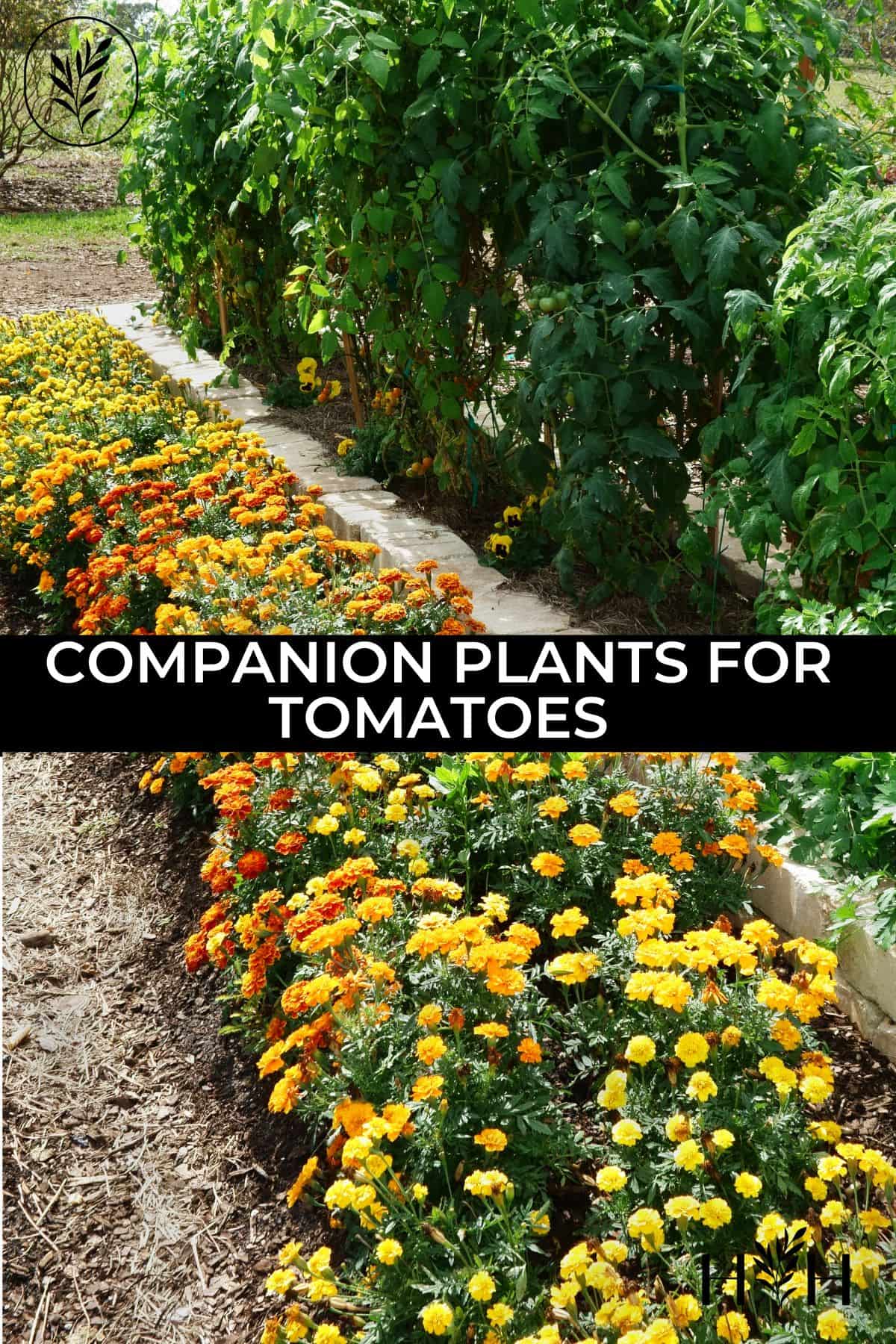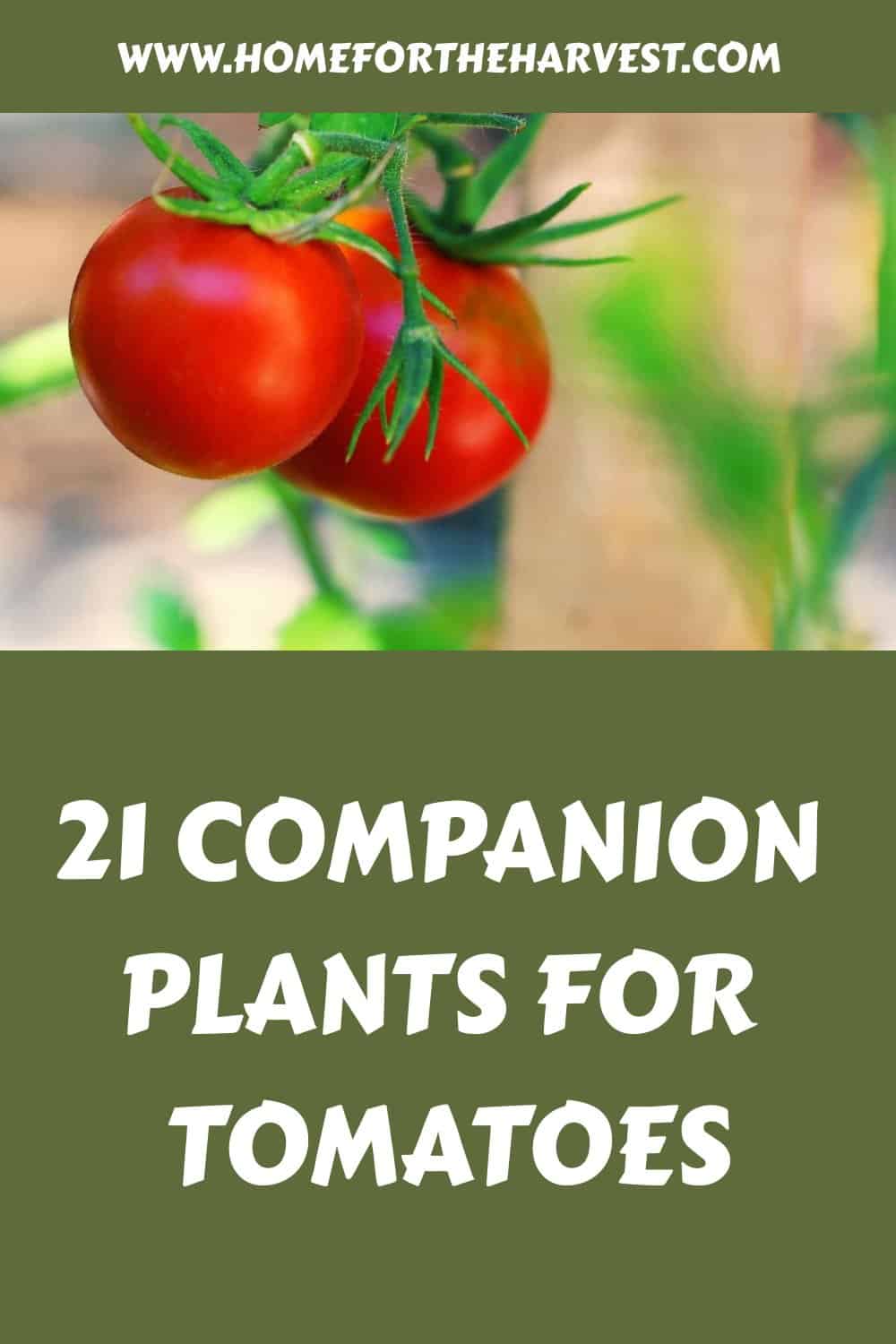Wondering what grows well with tomatoes? Fortunately, tomatoes have lots of friends in terms of good companion plants.
Companion plants for tomatoes can attract beneficial insects, deter and distract pests, provide a living trellis, add nutrients to the soil, and suppress weeds. Some of the best companion plants for tomatoes are herbs like basil, thyme, and chives, vegetables like asparagus and peppers, as well as flowers like marigolds and sunflowers. Avoid planting cabbage family plants near tomatoes (including kale and broccoli), as well as fennel and dill.
This article will discuss the best companion plants for tomatoes and some not-so-friendly plants to avoid so you have all the information you need! Read on to learn all about companion plants for tomatoes!
Tomato companion planting basics
Tomato plants are in the Solanaceae family, sometimes called the Nightshade family. Other vegetables in the Solanaceae plant family include potatoes, eggplant, bell peppers, and chili peppers. In general, scented culinary herbs make good companions for nightshades like tomatoes, while brassicas (cabbage family plants) can inhibit the growth of tomato plants.
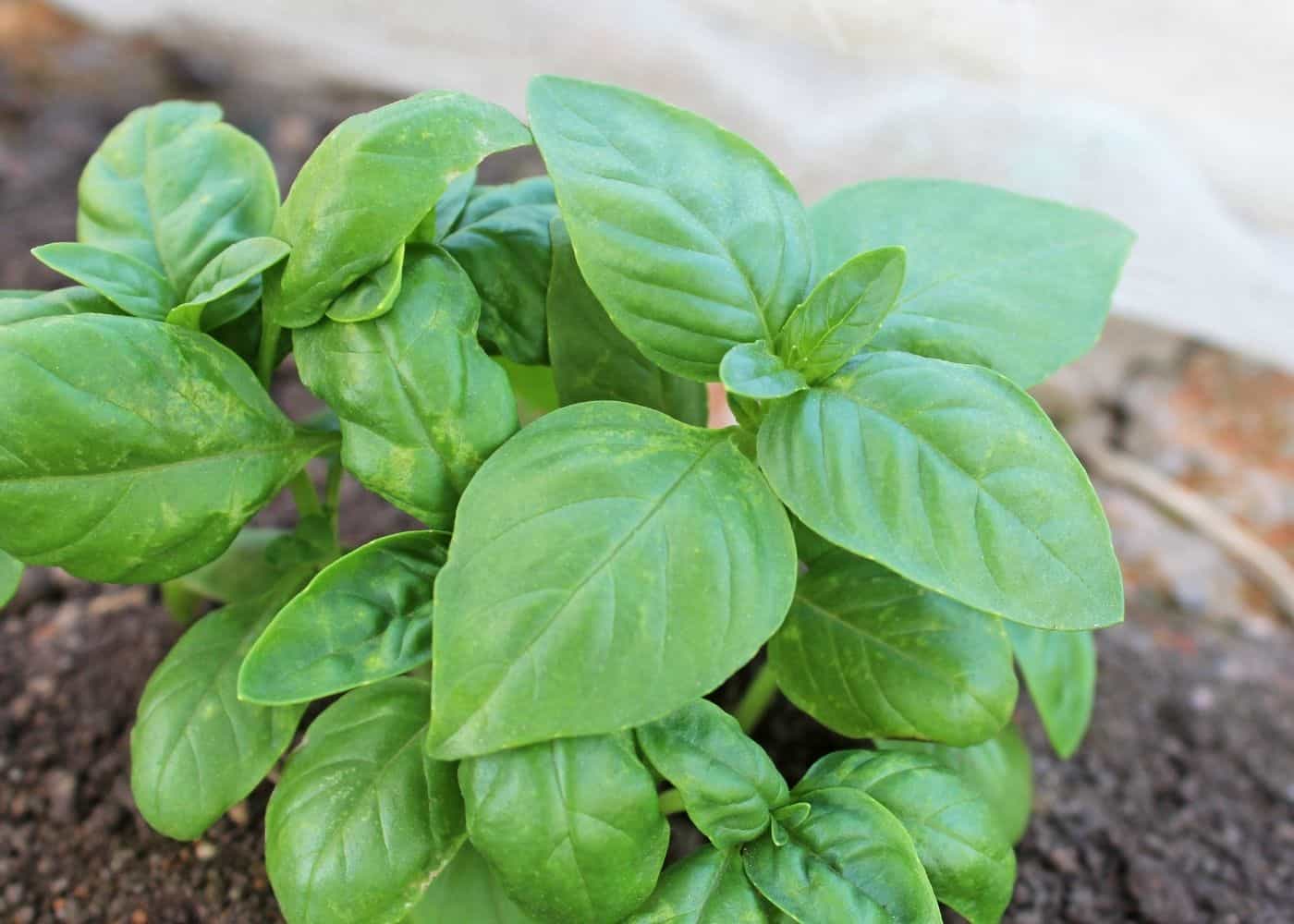
1. Basil
Basil makes an excellent companion plant for tomato plants because it camouflages its scent. When the plant’s scent is hidden, pests like thrips and moths can’t locate the plant and attack it. Thrips are pests that love to eat tomato plants, spreading a disease known as Tomato Spotted Wilt Virus. Similarly, certain adult moths lay eggs that produce tomato hornworms which eat the plant and can devastate a harvest.
Basil also discourages pests like mosquitos and flies from getting near the tomato plant. The herb can enhance the flavor of your harvest and promote the healthy growth of tomato plants. Popular basil varieties to grow near your tomatoes include traditional Genovese basil as well as the recently introduced Emerald Towers basil cultivar.
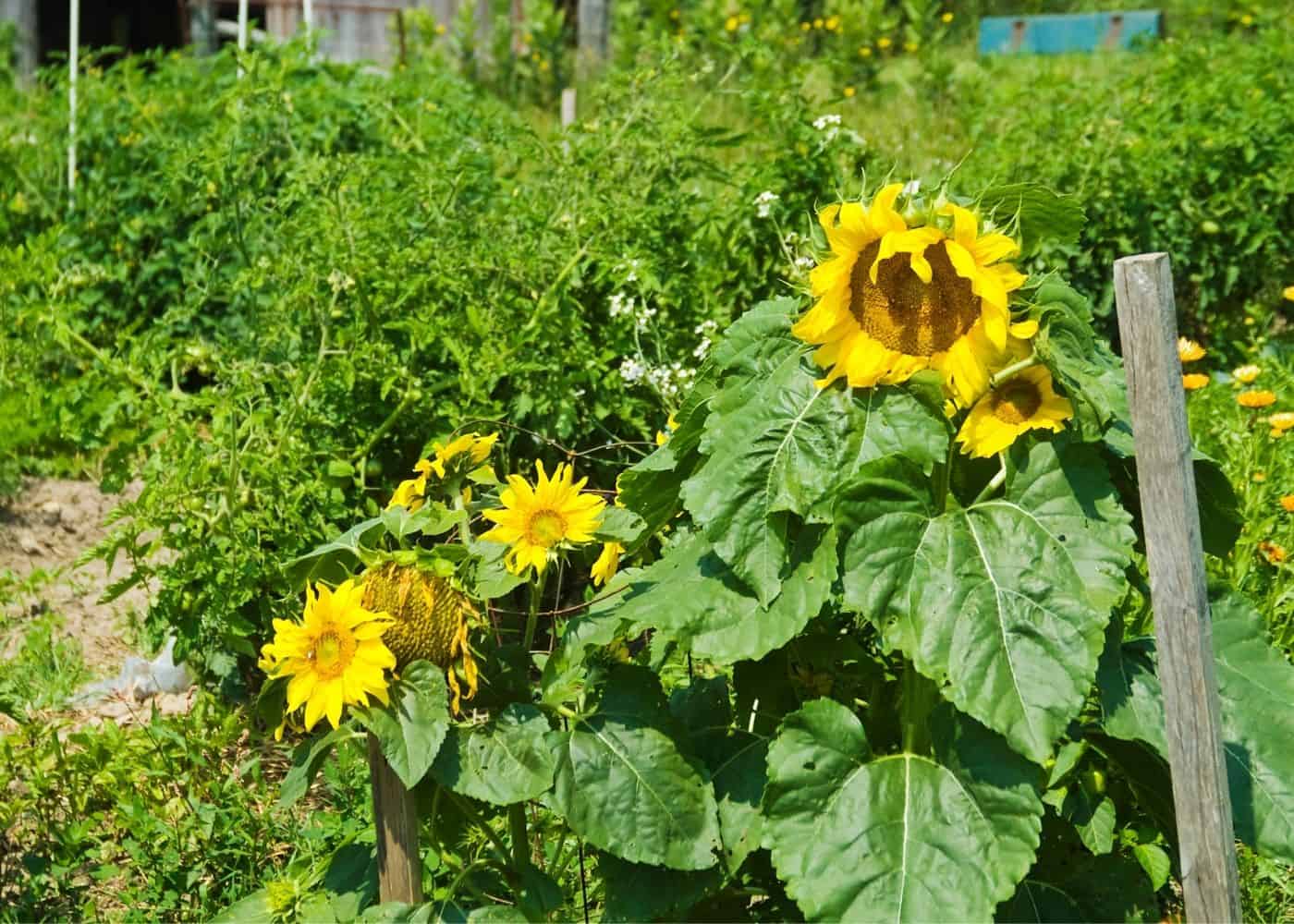
2. Sunflowers
Sunflowers make great companion plants because they attract bumblebees and birds to the garden area. Sunflowers also attract other smaller native bees to the garden, helping to pollinate the self-fertile tomato flowers in the area. These plants are not only compatible with tomatoes but also with most other vegetables in the garden.
In late summer and early fall, sunflowers attract birds in the fall that eat sunflower seeds. As a result, these birds might eat some of the pest insects affecting tomatoes late in the season. Lastly, sunflowers provide an effective windbreak in windy areas, which is very helpful if growing indeterminate tomato varieties, as these big plants can grow vines 6-8 feet long inside a tomato cage or up a stake.
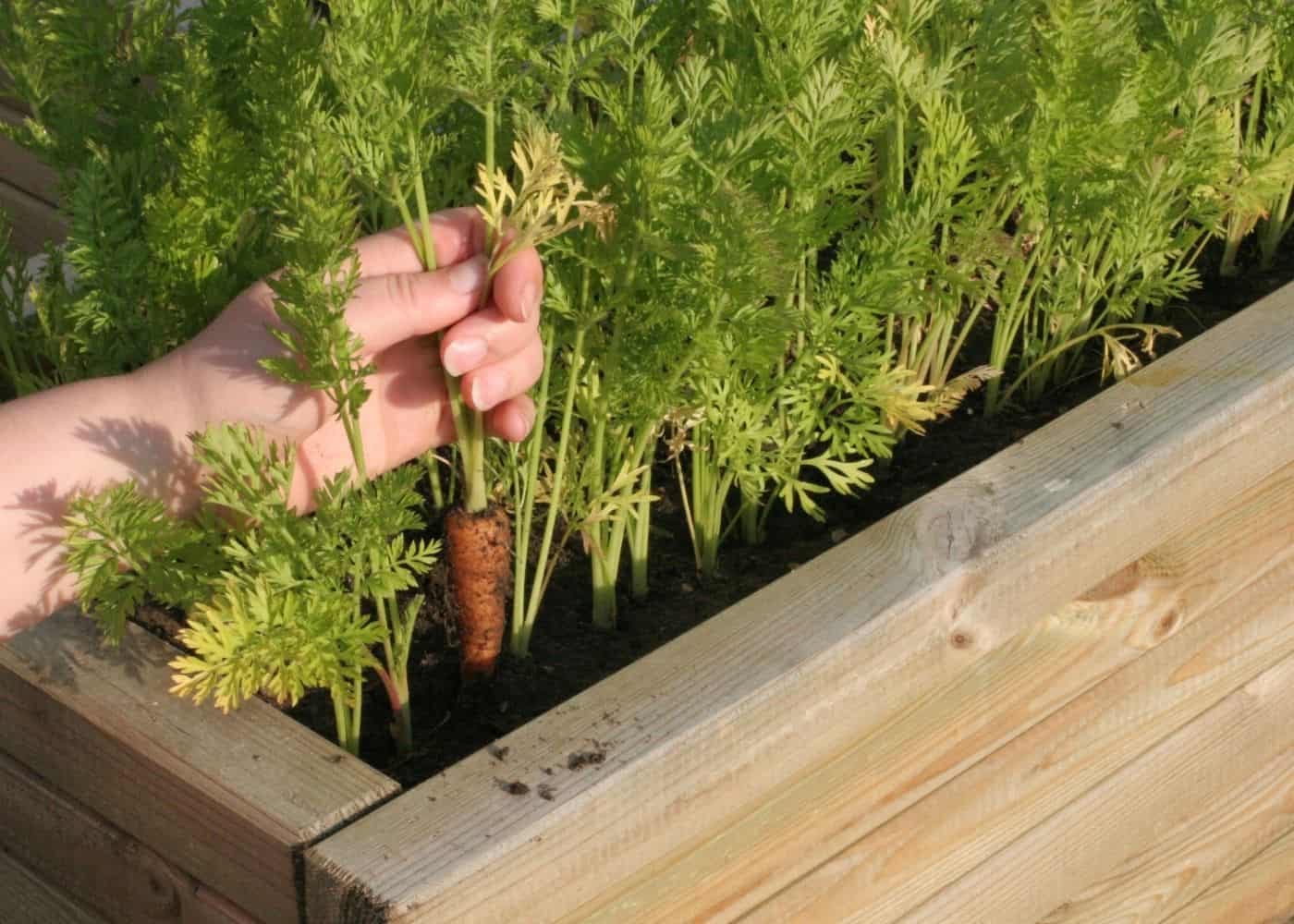
3. Carrots
Carrots make great companion plants because they support beneficial parasitic wasps if left to flower. As a biennial plant, flowering is most common with overwintered carrots, so consider leaving some carrots in your garden beds in the fall and into the spring. As a bonus, you’ll be able to collect seeds from the carrots as they flower during their second summer.
Carrots are one of the most commonly planted plants compatible with tomatoes. Carrots that are planted close to tomatoes may not grow as large as they might otherwise, but they also tend to have fantastic flavor. Popular carrot varieties for your vegetable garden include Royal Chantenay and Danvers 126. Here is a guide to the four main types of carrots.
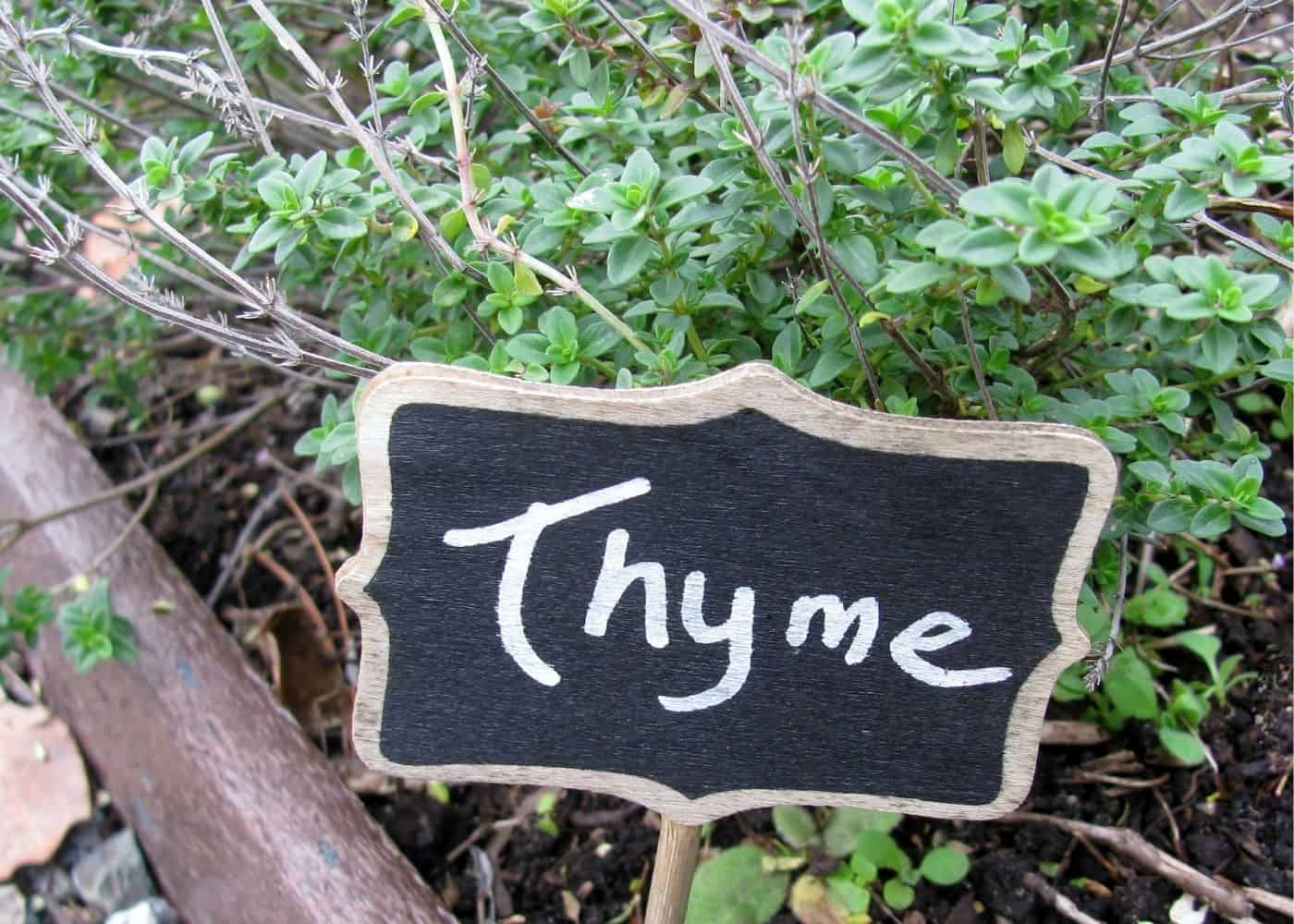
4. Thyme
Thyme disguises tomato plants from armyworm moths, a common pest in southeastern gardens. The moths lay eggs on the plants, which hatch into larvae (yellow striped armyworm) that eat the plants (leaves, fruits, etc.).
In addition, thyme plants are quite short, making them useful as groundcover plants or living mulch at the base of tomato plants. Living ground cover like thyme can prevent rainwater from splashing onto the leaves, spreading soil-borne disease onto tomato leaves.
There are a whole host of different types of thyme to consider for your garden. Culinary types include English thyme and Lemon thyme, while more ornamental options include Red Creeping thyme and Elfin thyme.
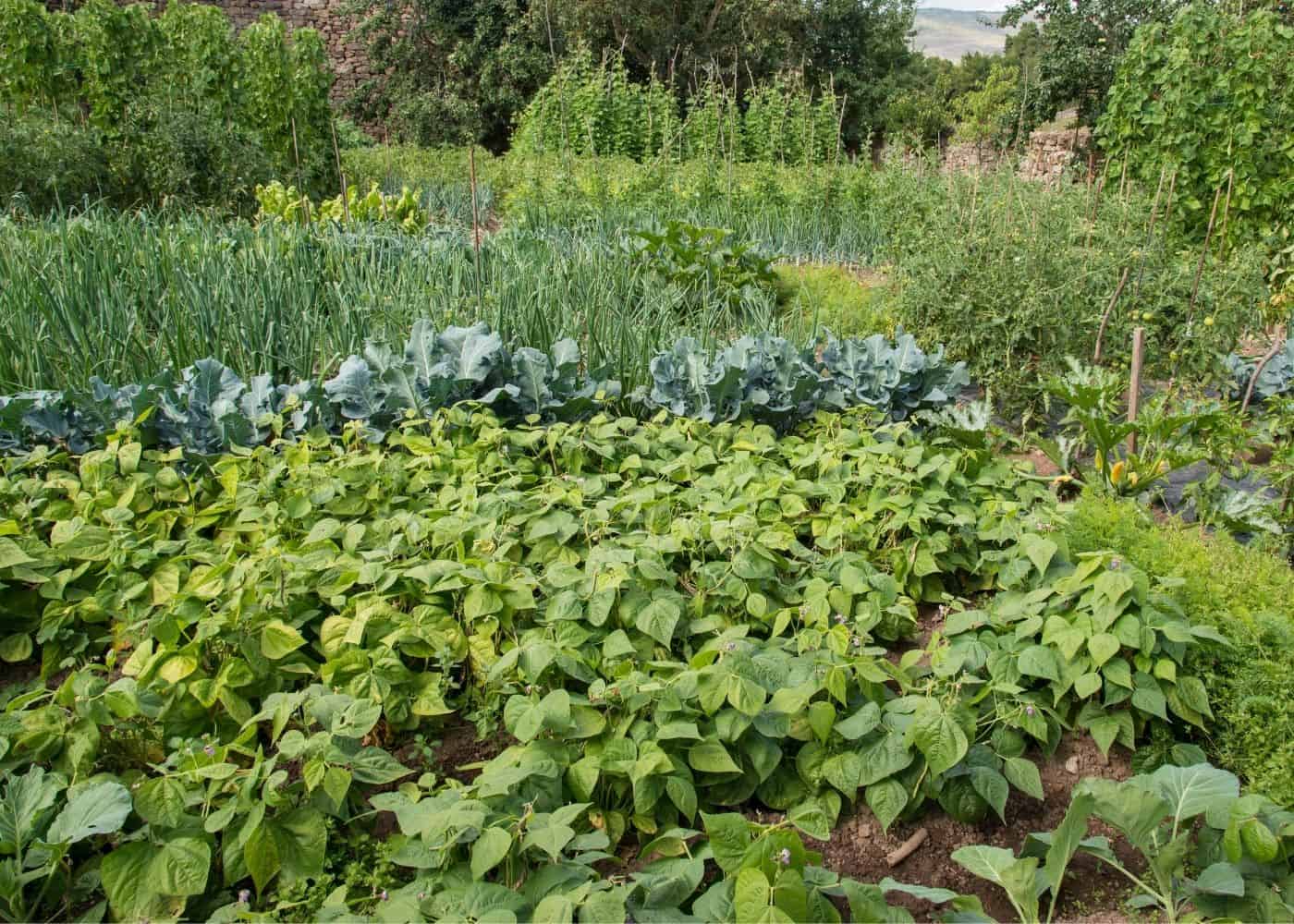
5. Beans
Beans are good companion plants for tomato plants because they attract bumblebees. Bumblebees are large native bees that are excellent pollinator insects in the garden. The flowers on bean plants attract bumblebees, leading them on to visit nearby tomato flowers.
Although tomato flowers are self-fertile, the flowers need to be jiggled to release the pollen for proper tomato flower pollination. For example, the wind, a gardener, or heavy insects like bumblebees can shake the flowers for pollination. So, attracting bumblebees to your tomato plants can be very helpful for tomato plant pollination, especially in sheltered yards.
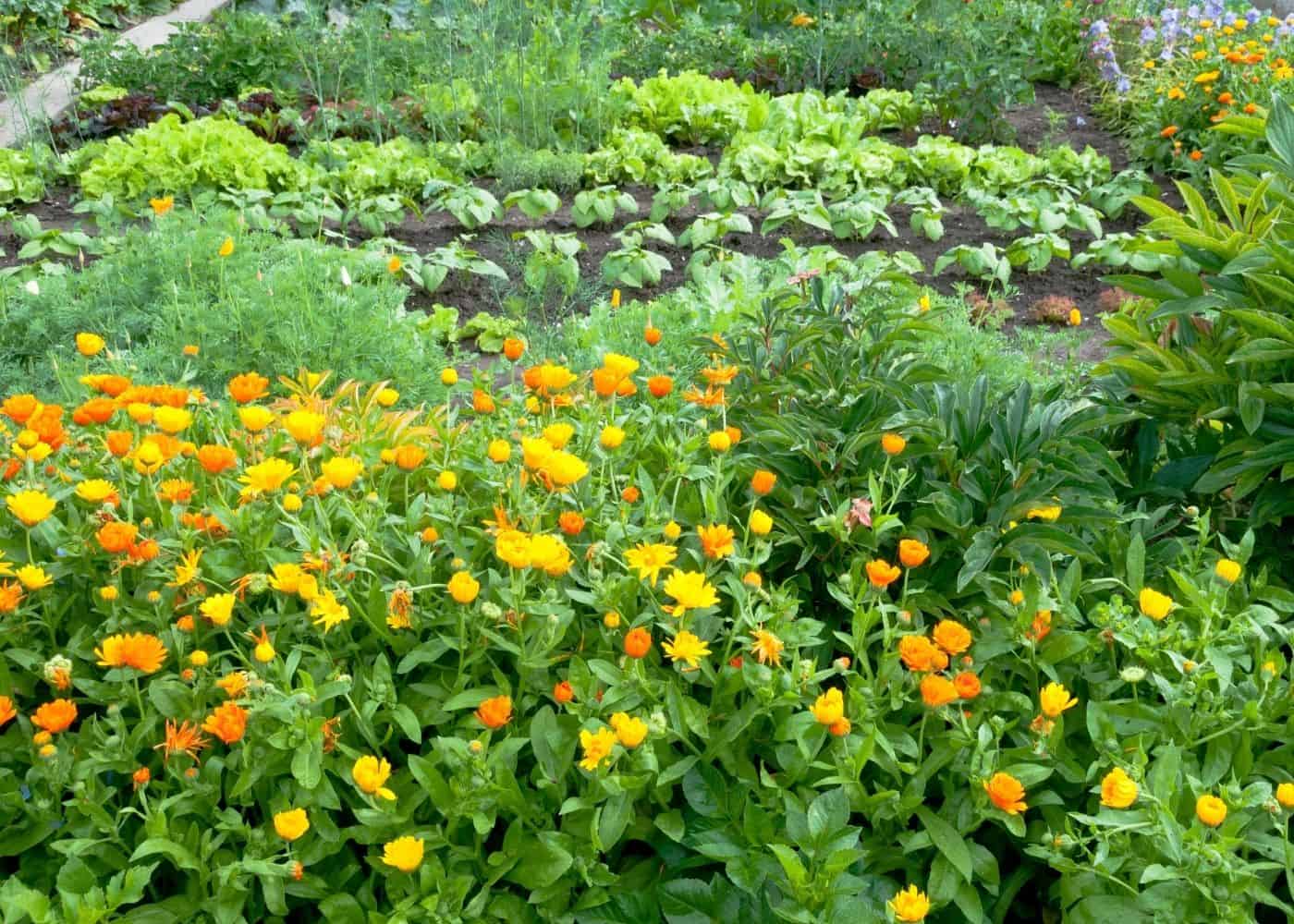
6. Marigold
Marigolds make great companion plants because they deter nematodes. Nematodes are microscopic worm-like creatures that attack the roots of tomato plants, especially in warm sandy soils where tomatoes grow best.
Marigolds are also grown around tomato plants to ward off whitefly. While they ward off pest insects, they may also help attract beneficial insects such as hoverfly and parasitic wasps.
“Grow with French marigolds to deter whitefly. Tomatoes grow well with basil, parsley, alliums, nasturtiums and asparagus.”
The Complete Book Of Vegetables, by Matthew Biggs
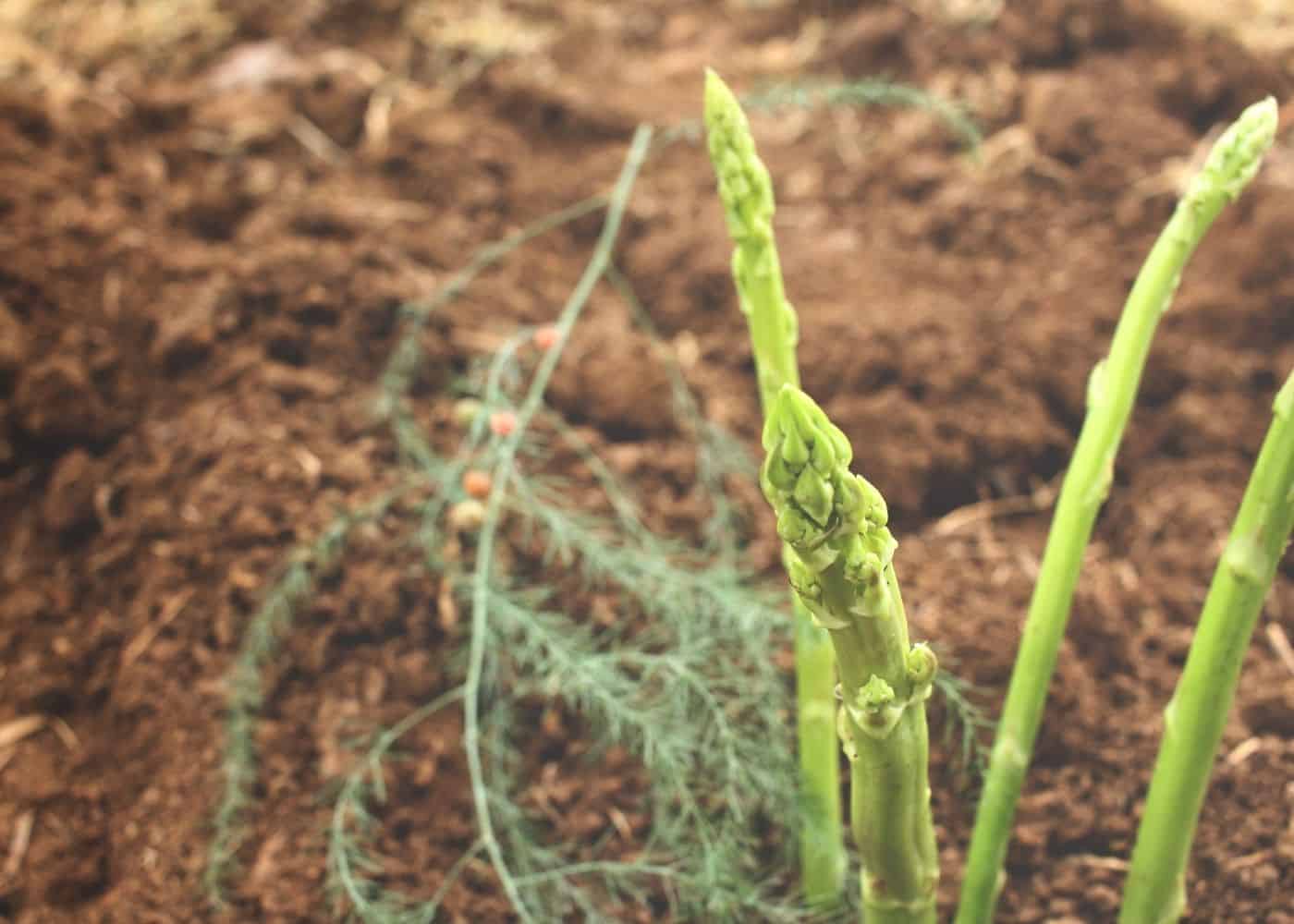
7. Asparagus
Asparagus is one of the most popular companion plants for tomatoes. Asparagus repels harmful nematodes in the soil that can attack the roots of tomato plants. Tomatoes are also helpful for asparagus plants, as the scent of tomato plants can repel asparagus beetles.
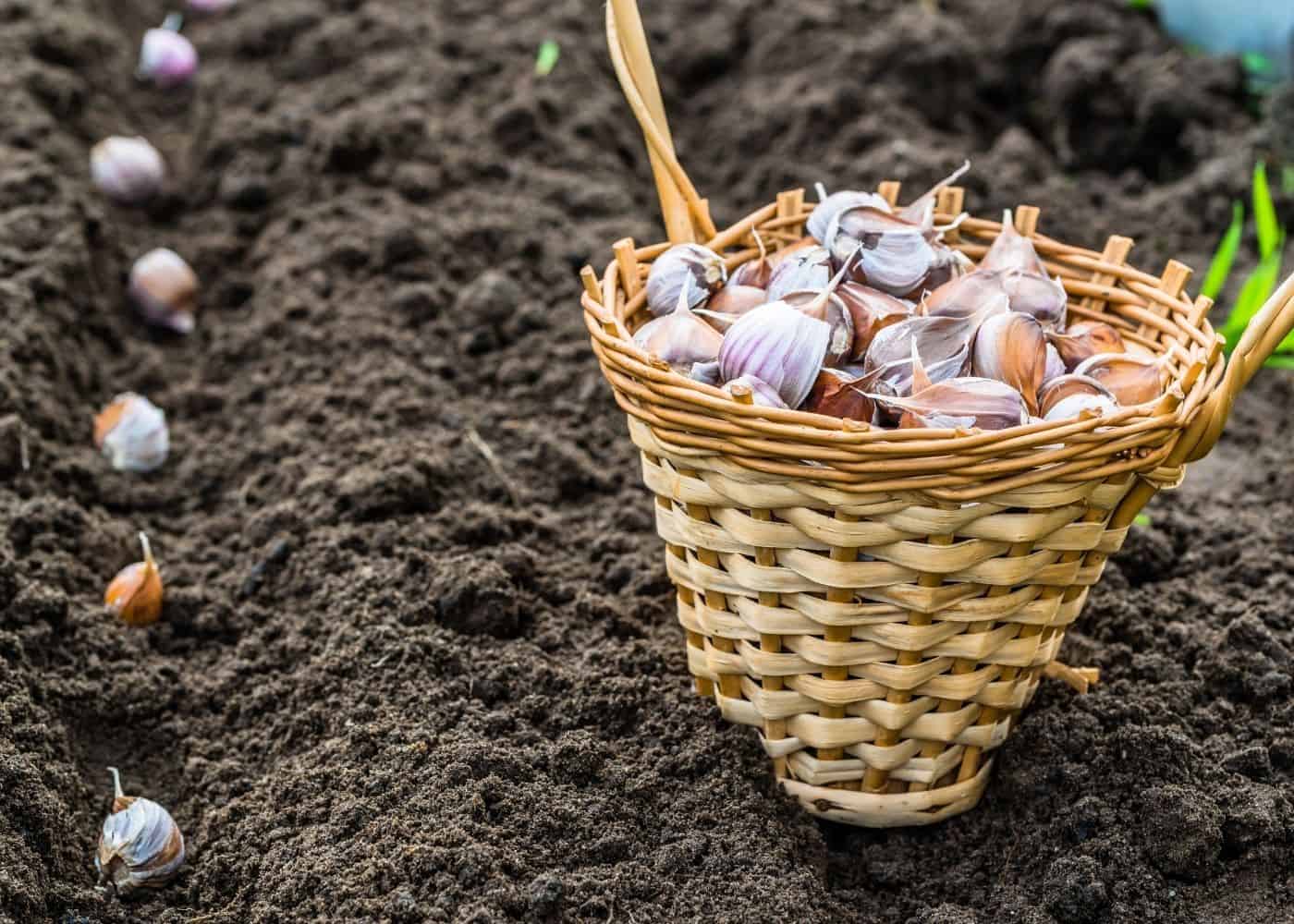
8. Garlic
Garlic plants are a great companion for tomato plants because their presence can discourage spider mites and common flying pest insects. The garlicky scent helps make sure hungry pests don’t get too near your tomatoes, let alone set up shop and start snacking on your delicious ripening fruits.
Garlic is generally planted in the fall and left in the garden during the winter so it’s ready for an early summer harvest. This is perfect timing for it to repel insects that lay their eggs in spring as the garlic plants are at their most scented right before harvest.

9. Parsley
Parsley makes a great companion plant for tomatoes because it attracts ladybugs, which feed on tomato plant pests like hornworms. In addition, parsley attracts hoverflies that feed on aphids, keeping aphids away from your tomato plant. Parsley is also fantastic to plant near your tomatoes as it often goes into the same dishes and cooked recipes.
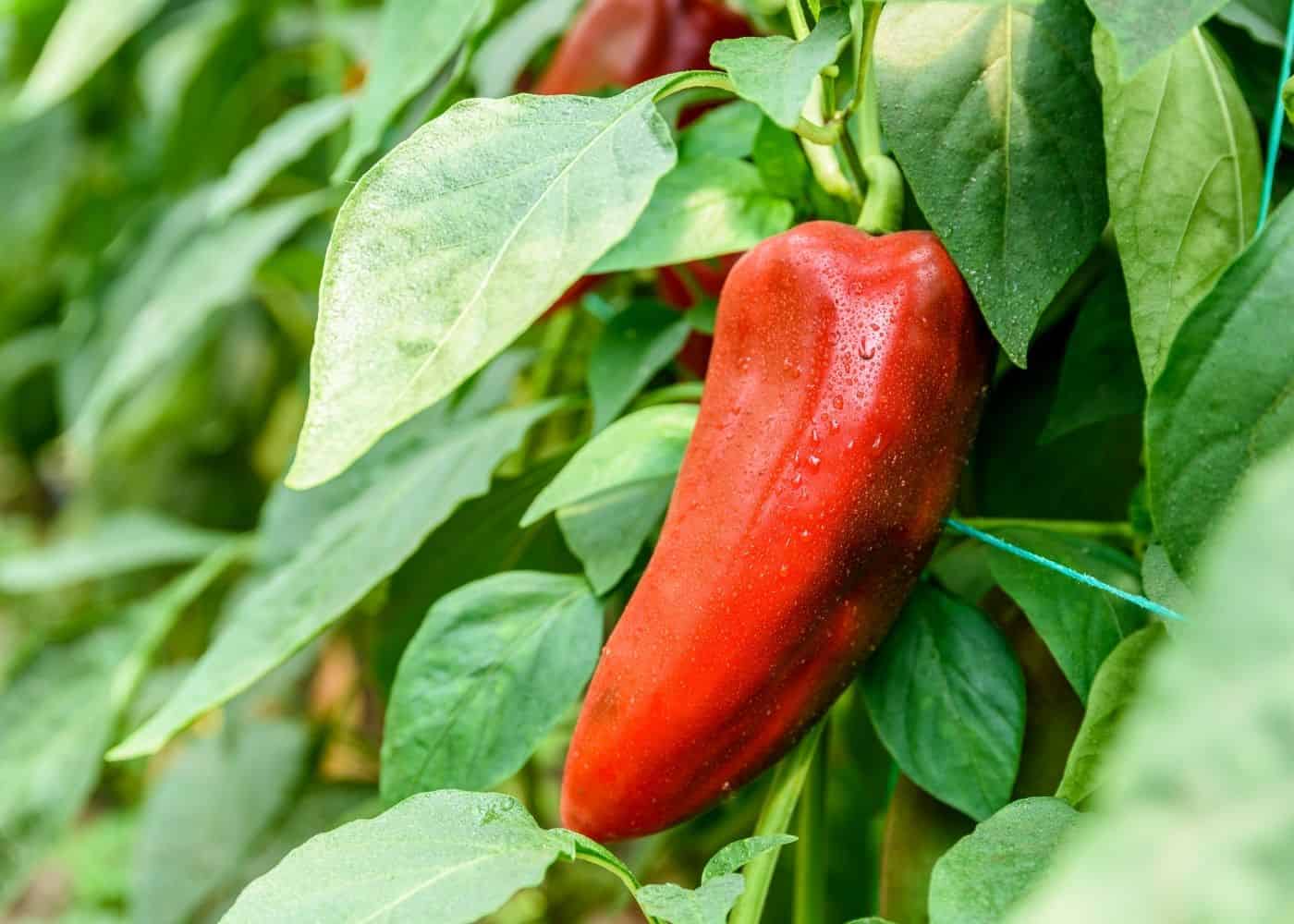
10. Peppers
Peppers make good companion plants for tomato plants because they thrive in similar conditions. These plants are both nightshades and are often grown together. Growing them together helps make annual crop rotation easier as these plants are both prone to the same types of soil-borne plant diseases. Keep your peppers with your tomatoes and rotate them around the garden!
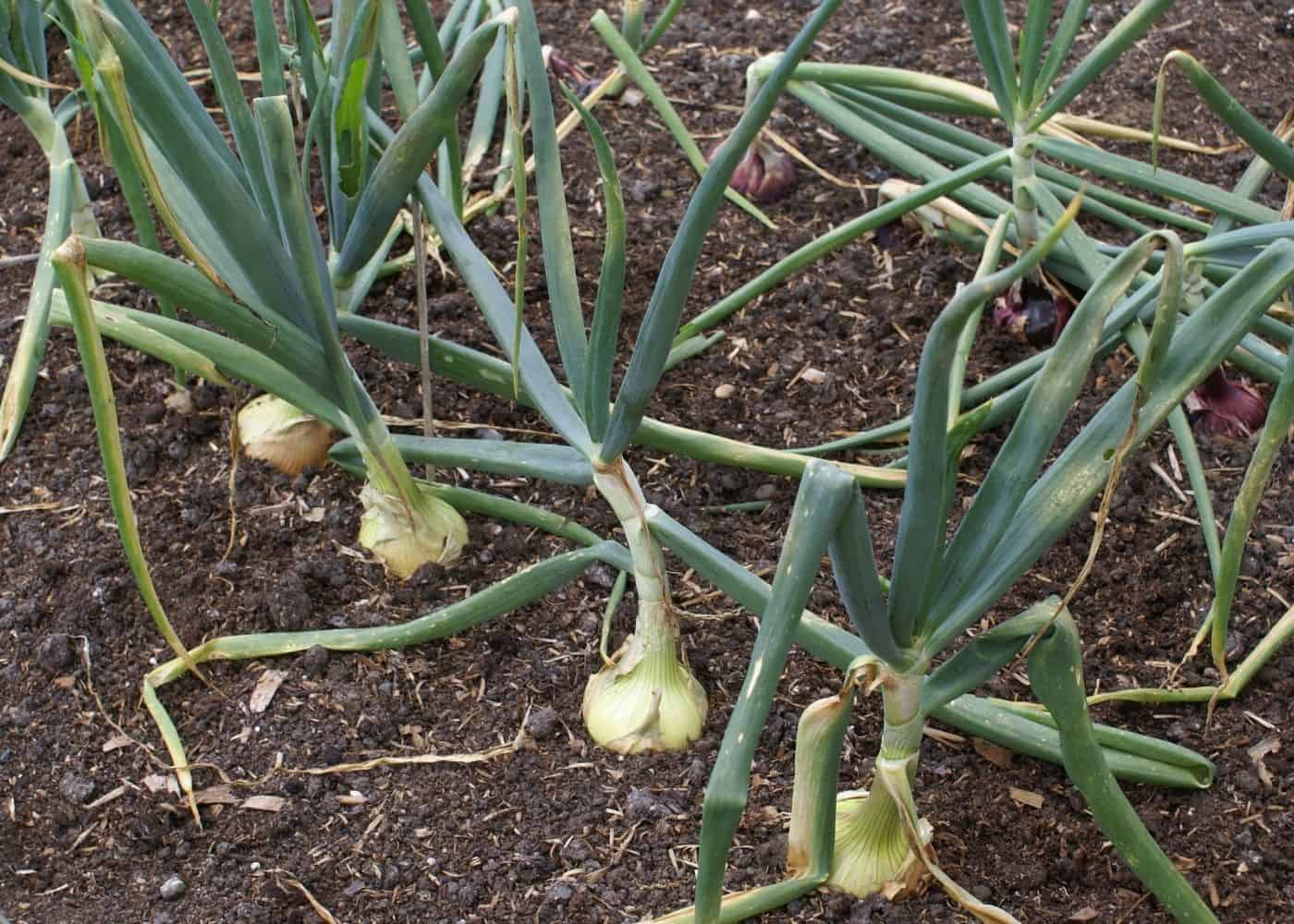
11. Onion
Onions and other allium family members (garlic, green onions/scallions, chives) repel aphids, keeping them away from nightshade plants like tomatoes, peppers, and potatoes. Onions also take quite a long time to grow, meaning they will still be standing alongside your tomatoes during the long, hot days of July.
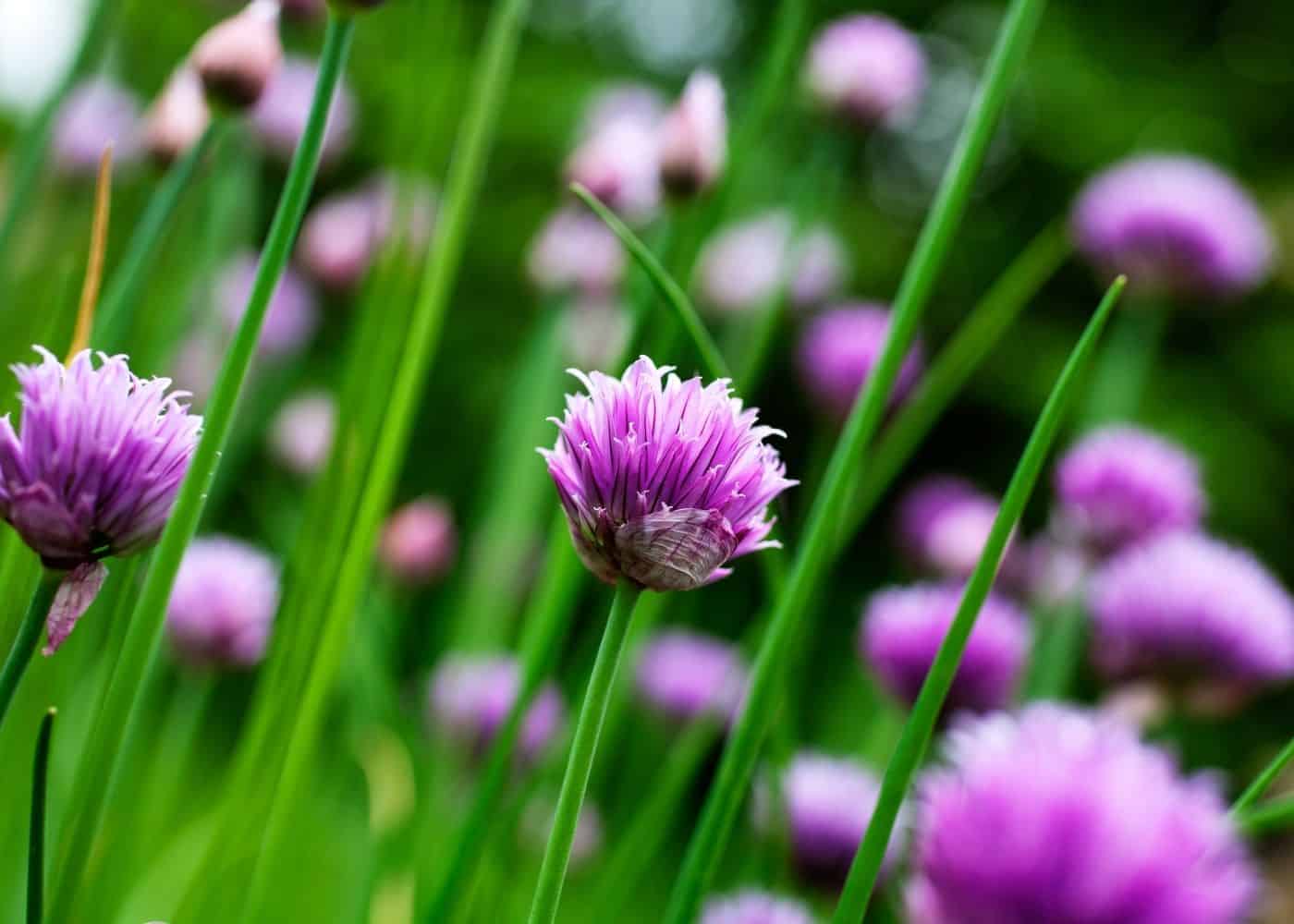
12. Chives
Chives make great companion plants for tomatoes because they contain sulfur-based oils. These highly-scented oils prevent pests from attacking your tomato plant. In addition, chives can improve the flavor of your tomatoes and are lovely for seasoning tomato dishes. Lastly, chives attract bees to their spring flowers, increasing the population of beneficial insects in your garden area.
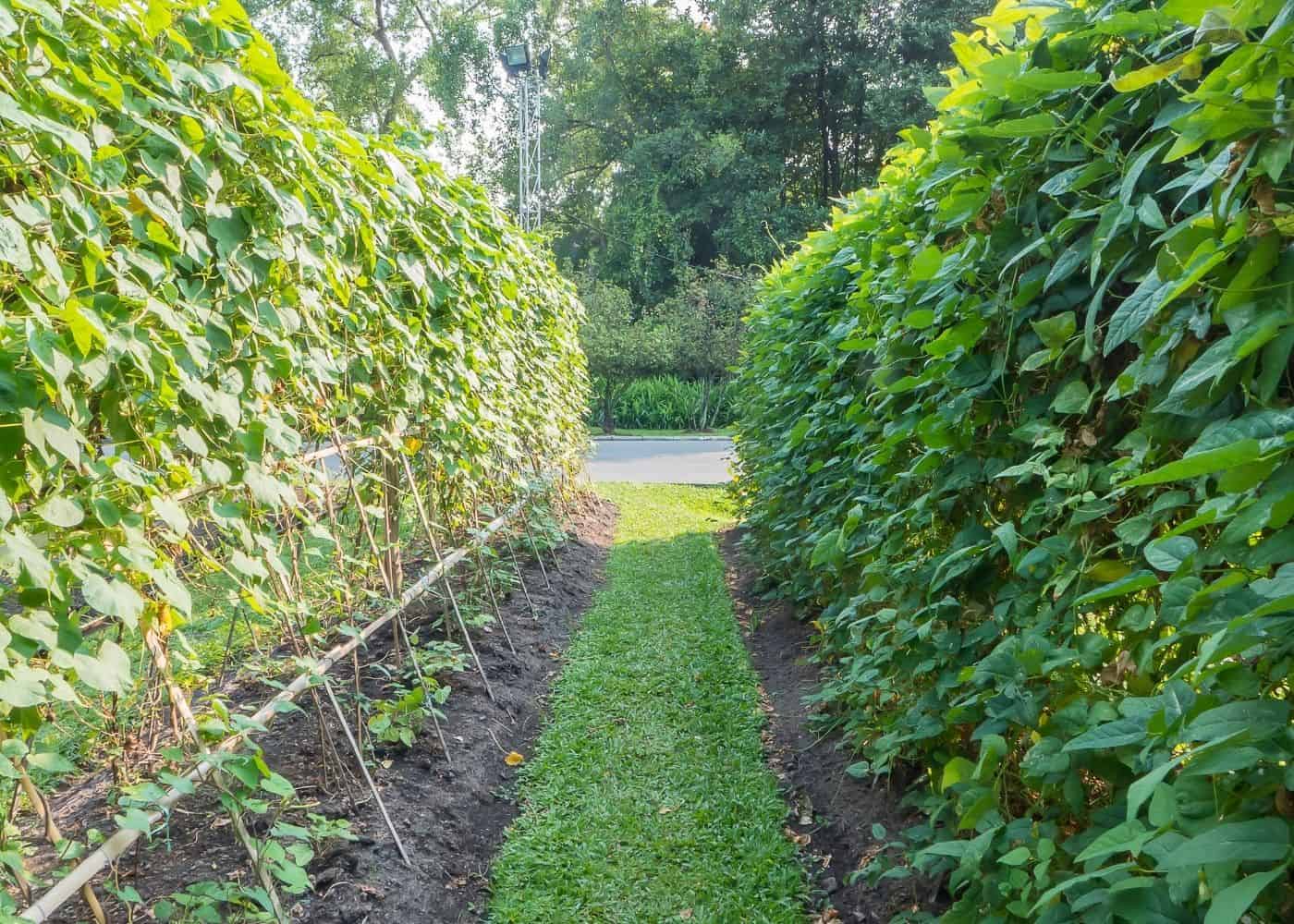
13. Cowpeas
Cowpeas are a good companion plant for tomato plants because they distract and draw away the pest green stink bug. In southern gardens, planting cowpeas in an area away from your tomatoes can draw green stink bugs over to the cowpeas, as they like cowpeas more than tomato plants.
To keep your tomato plants safe, check the cowpeas often, removing any green stinkbugs you do see. Then, drop them in a bucket of soapy water.
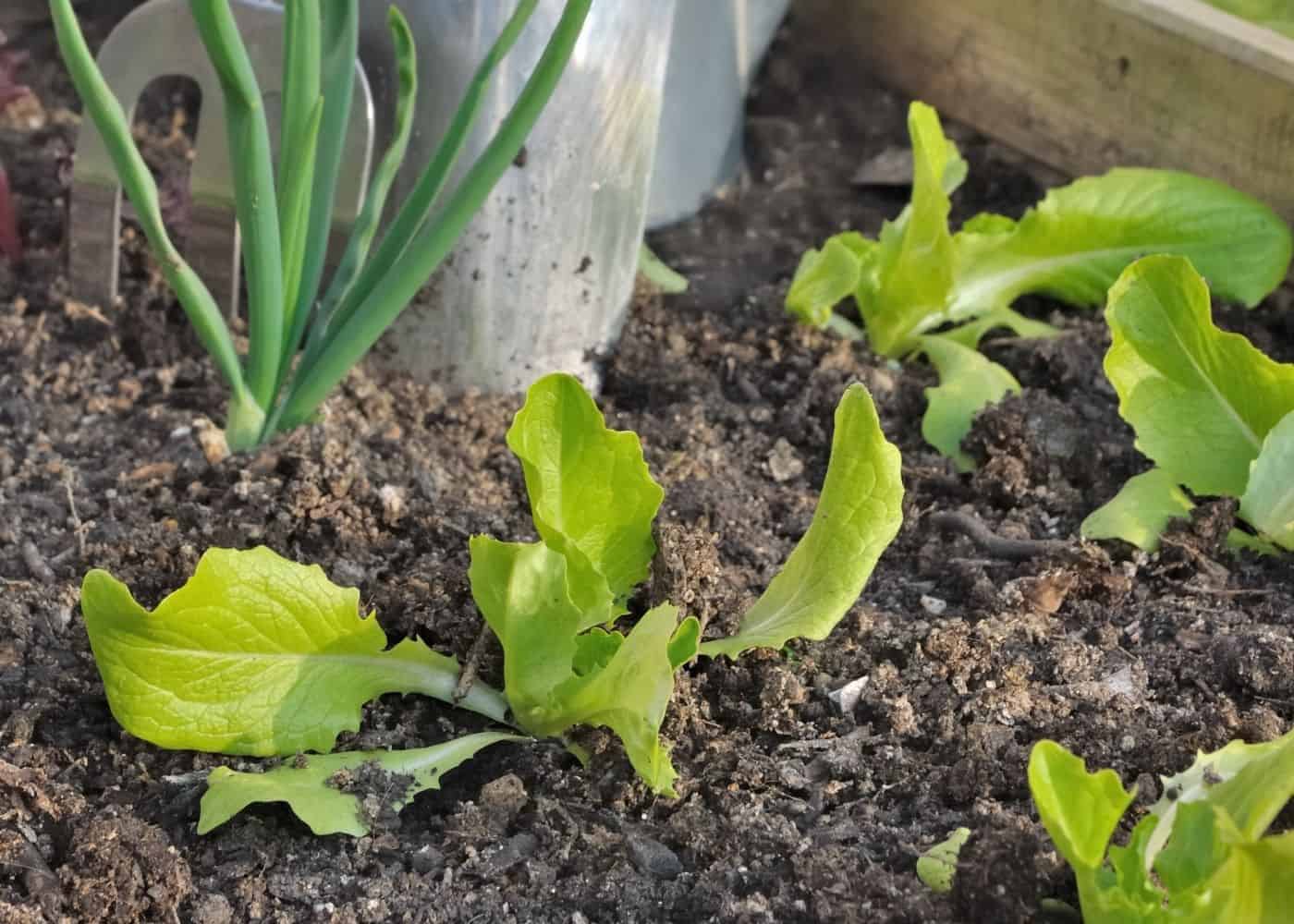
14. Lettuce
Lettuce is a good companion plant for tomatoes due to its size and shape, as well as for its culinary uses. Tomatoes grow well in warm weather while lettuce tends to bolt (prematurely grow seeds), so lettuce is often planted in the shade of large tomato cages. The lettuce gets some cover from the sun and in turn fills in the empty soil space around the base of tomato plants to keep weeds from moving in (weeds LOVE to find and colonize bare soil).
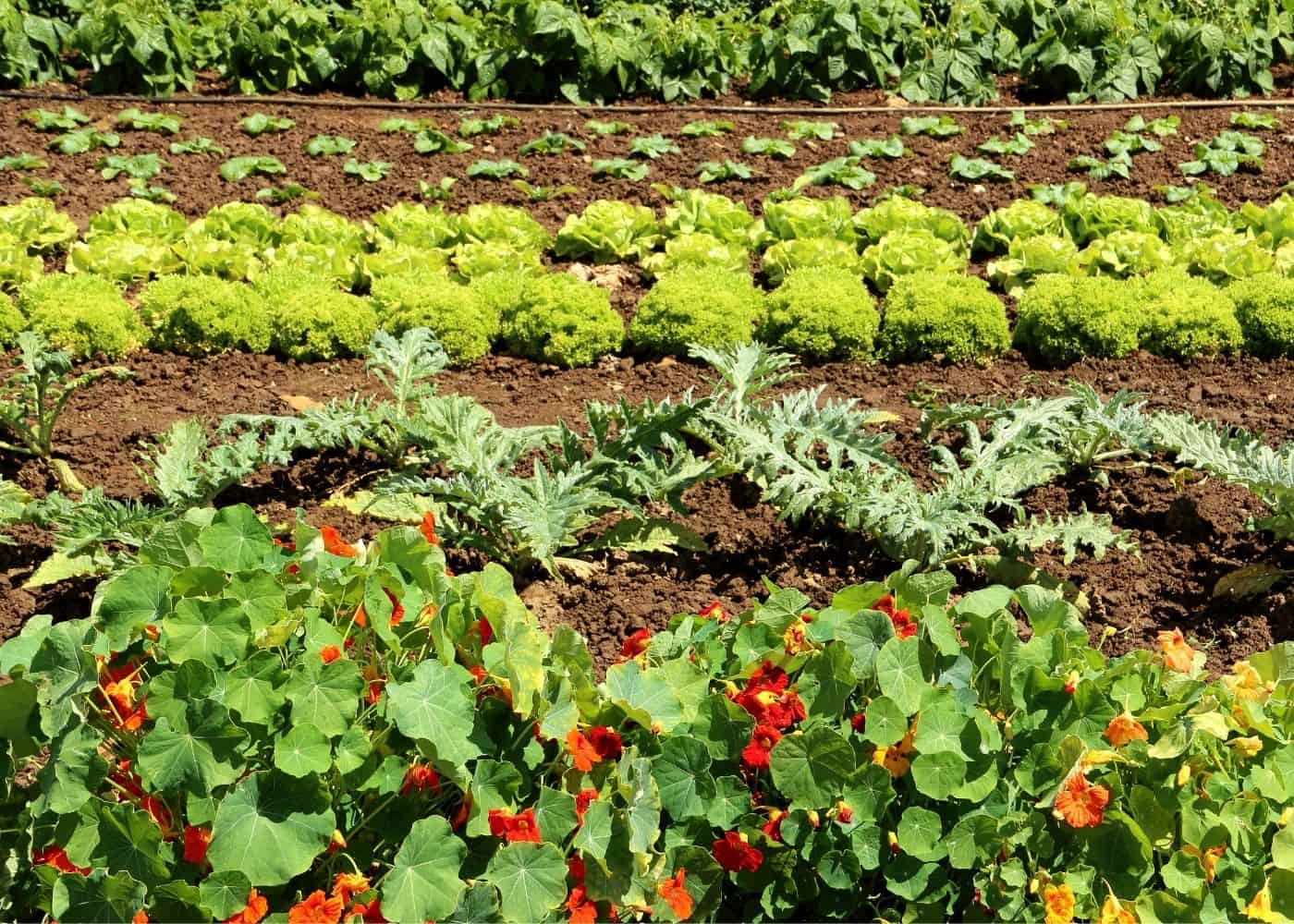
15. Nasturtium
Nasturtium is an edible flowering plant often used as a “trap” companion plant to attract aphids, keeping them away from your tomato plants. The peppery scent can also deter pests like whitefly and certain beetles. Lastly, these plants grow very quickly from seed and sprawl all over the ground, helping to keep soil moist and providing habitat for beneficial predator insects like spiders.
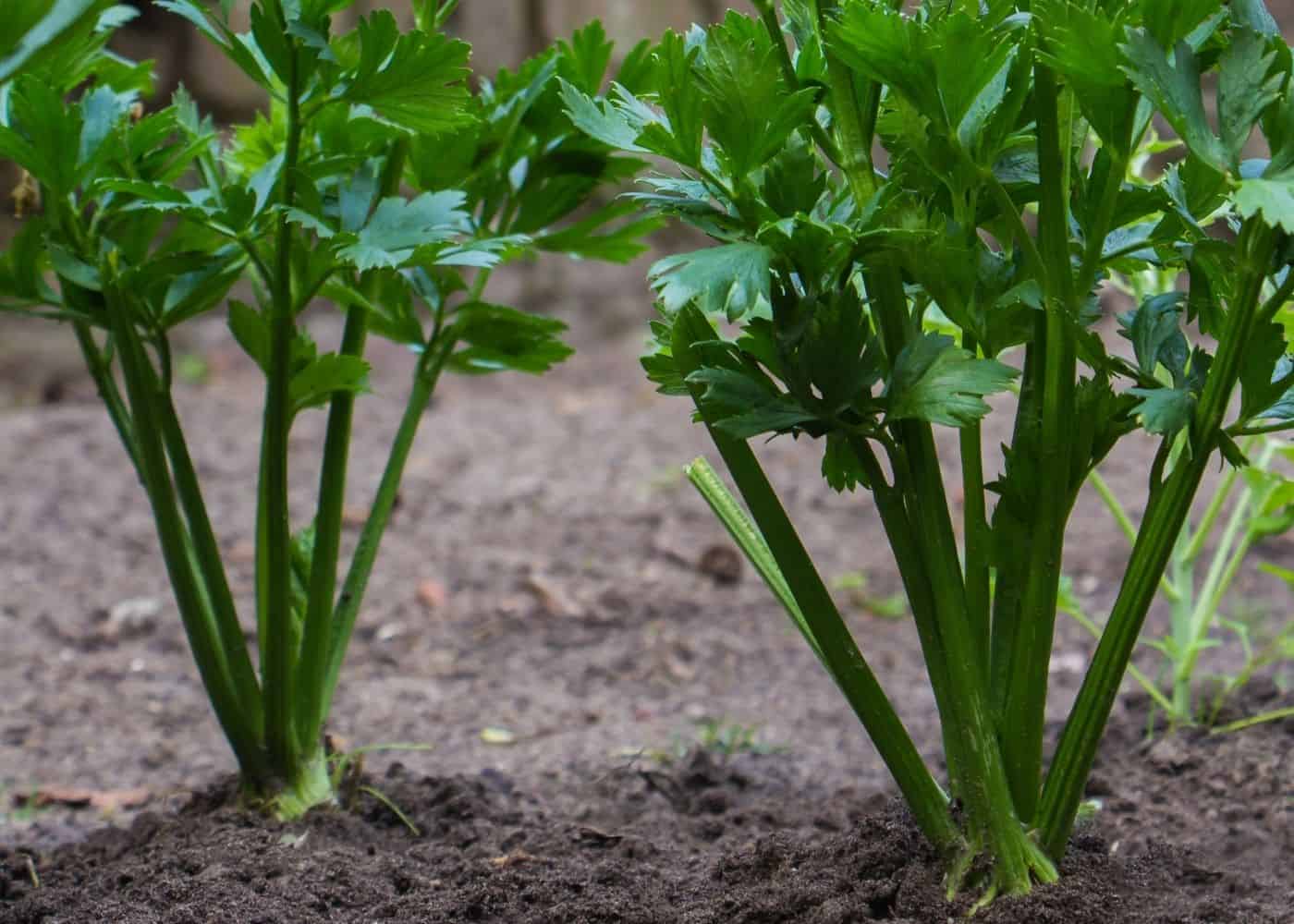
16. Celery
Celery makes an excellent companion plant for tomato plants because it can lessen soil-borne disease and promote growth for your tomato plants. It’s also handy to have nearby as it goes in many of the same recipes. Lastly, celery has specific watering and care requirements which means you’ll be in that area of the garden quite often, making it easier to check on and care for your tomato plants.
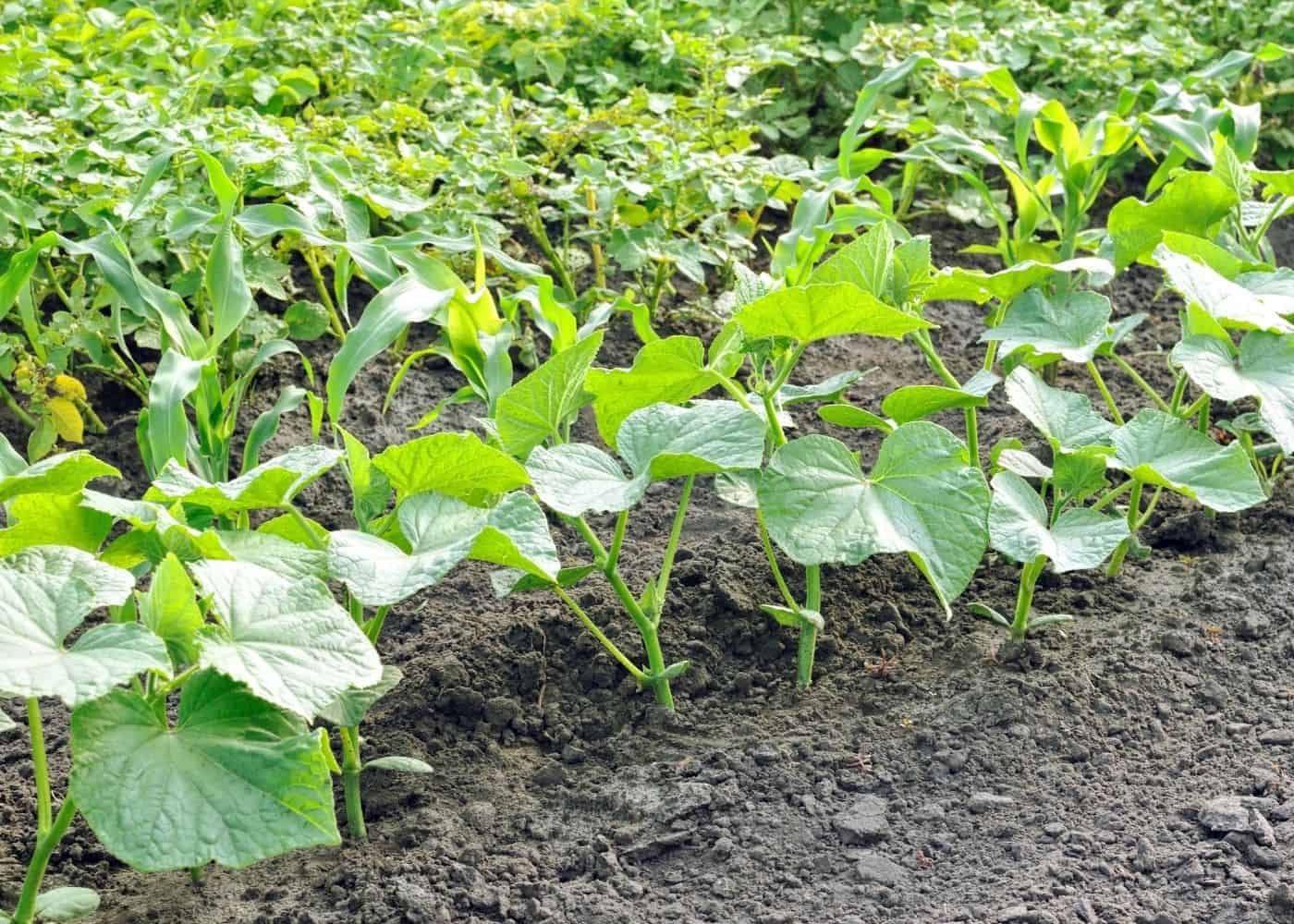
17. Cucumbers
Cucumbers can be grown well alongside tomatoes. You can grow cucumbers at the base of tomato plants to keep weeds down as a living mulch. These two plants both love warm summer weather and will thrive in the same area of the garden
First, place a trellis behind the tomato plant for the cucumbers to grow up. Then, position the trellis on the north side of the garden, where it will not shade the tomato plant during sunny days. Some of the cucumber vines will grow up the trellis while others may shade the ground at the base of the tomato plant.
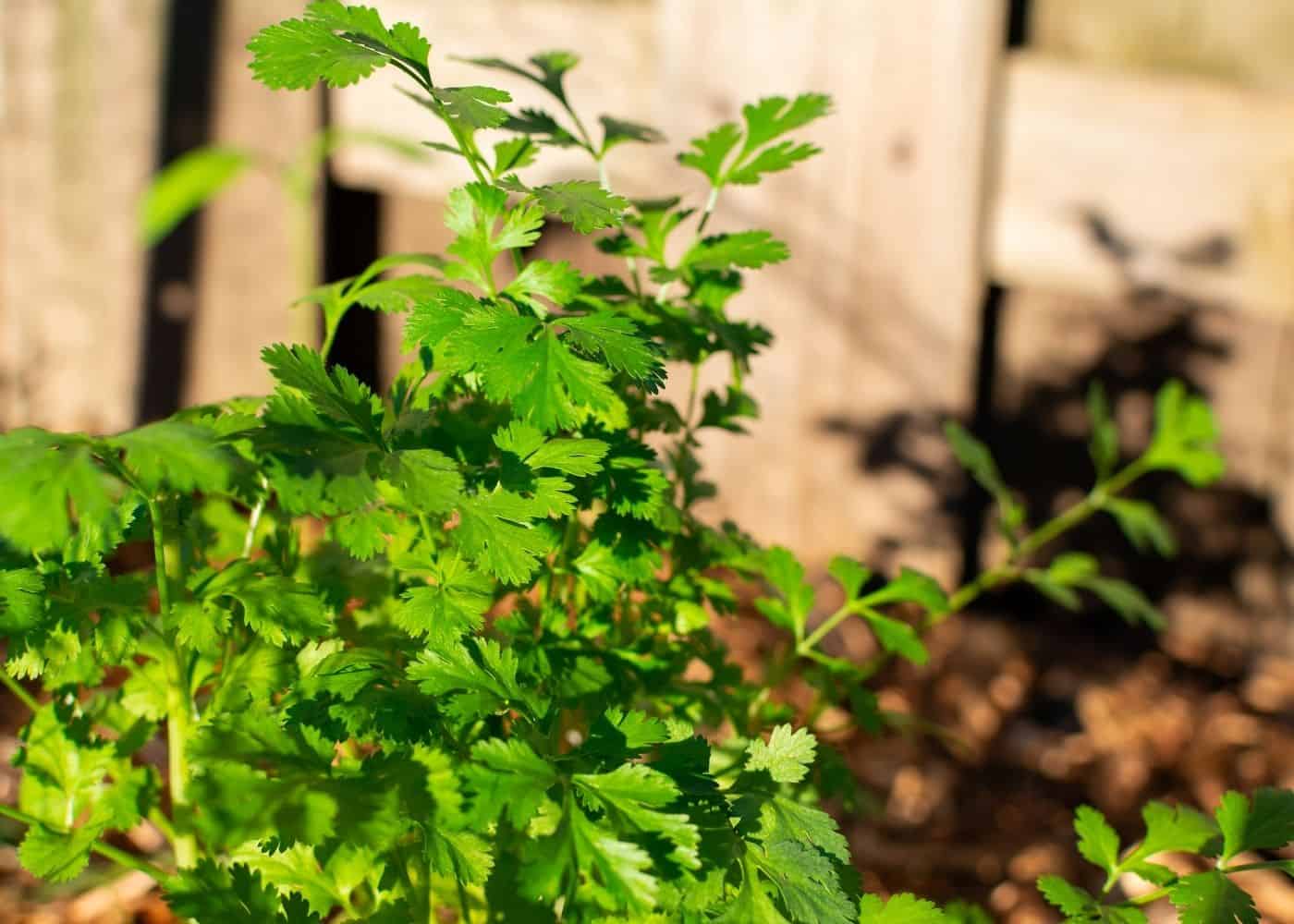
18. Cilantro
Cilantro can help to control tomato hornworms and other hungry pest larvae. The cilantro attracts and supports parasitic wasps if the plants are allowed to flower (the wasps eat the nectar). These wasps lay eggs inside tomato hornworms, which then die after the larval wasps pupate.
Additionally, having cilantro nearby your tomatoes is perfect if you like to make spicy summer dishes like fresh guacamole and pico di gallo. You’ll have your own salsa garden!
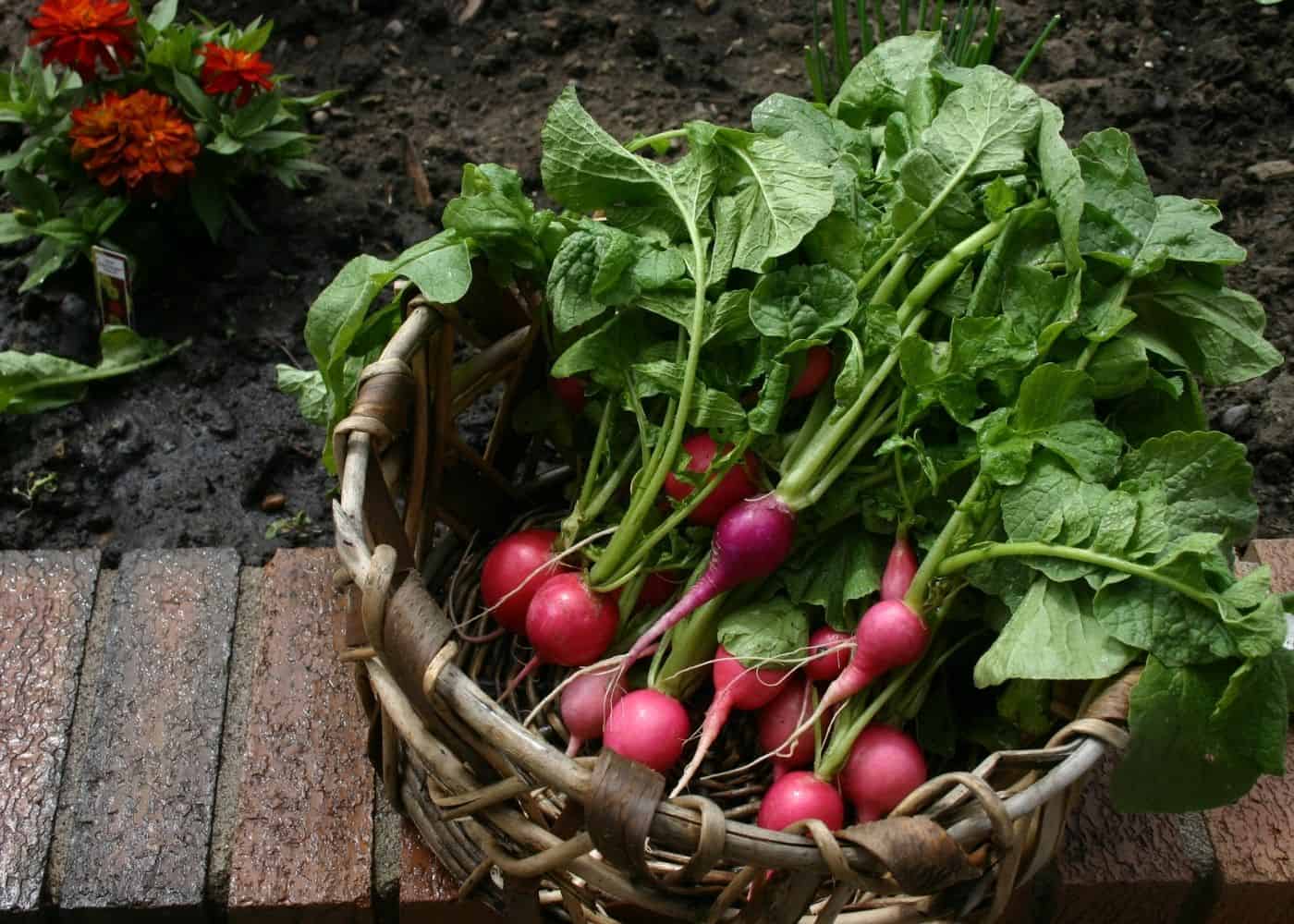
19. Radishes
Radishes are a favorite crop of pest insects like flea beetles and may distract them from attacking tomatoes. Flea beetles eat the leaves of many vegetable plants (pumpkins, peppers, tomatoes, kale, squash, etc.), but they prefer radishes and will eat radish leaves instead. Radishes can be planted year-round in mild climates or can be planted in late summer when mid-summer temperatures are overly hot.
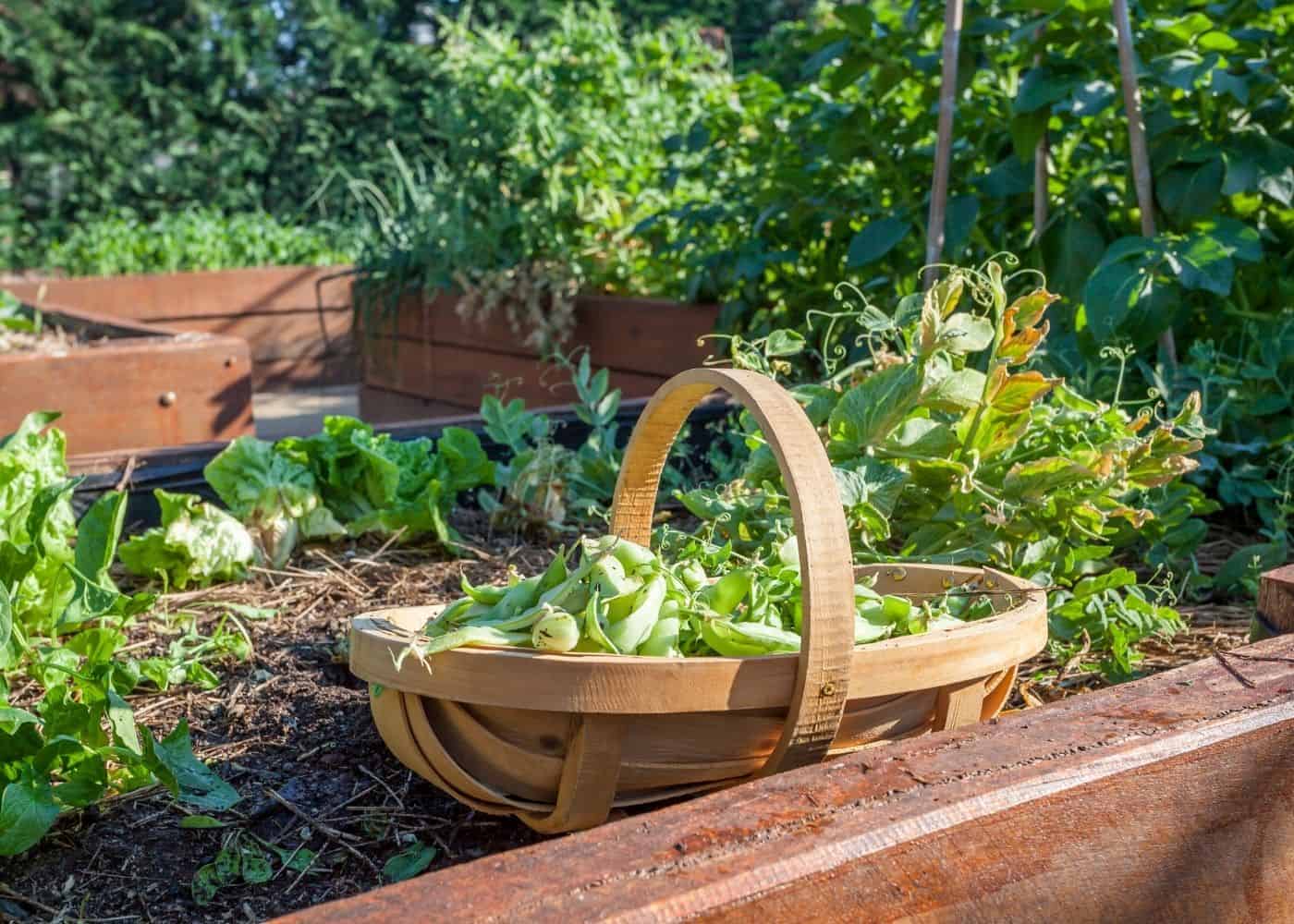
20. Peas
Peas are an excellent predecessor companion plant for tomatoes. Peas are planted much earlier in the spring because they are a cool-season crop, while tomatoes are a warm-season crop. Since both plants require vertical support of some sort, the peas can be swapped out for tomato plants when the weather becomes too warm for peas to thrive.
In addition, peas are legumes that draw nitrogen from the air down into the garden soil. Nitrogen is an essential macronutrient for young tomato plants as they establish leaves. These leaves are required for photosynthesis and capture energy, producing delicious tomatoes later in the season.
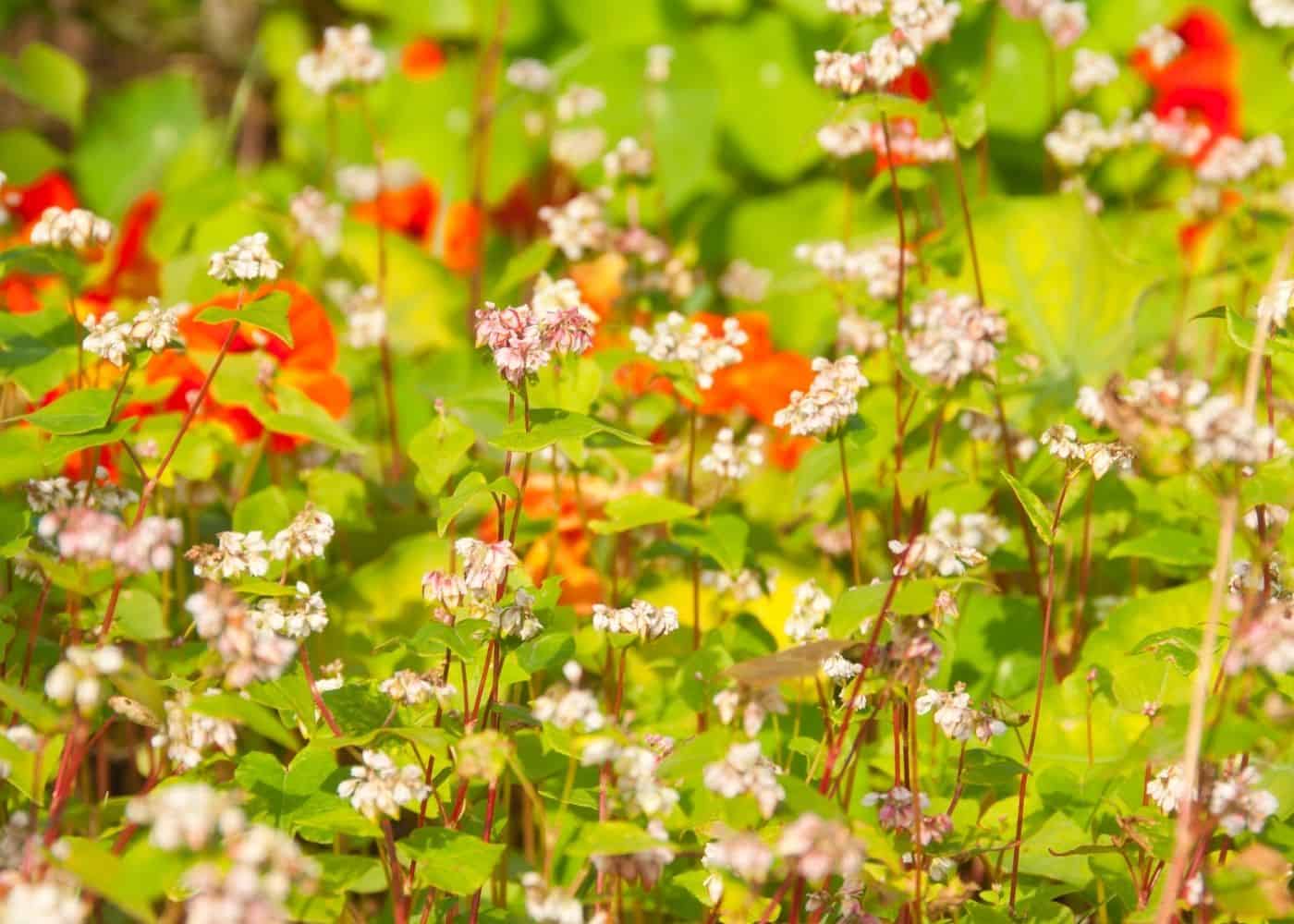
21. Buckwheat
Buckwheat is a good predecessor companion plant for tomatoes. It does not grow simultaneously but is planted in the same spot earlier in the year as a “cover crop.” It enriches the soil for the tomatoes and can help control disease.
If growing buckwheat, sow 6-8 weeks before the tomatoes. Then, cut it down when the first flowers appear at the soil line. Don’t let it grow seeds, as they can sprout and take over the garden. Lastly, chop up the buckwheat stalks and use them as a mulch or add them to the compost heap to make nutrient-rich compost.
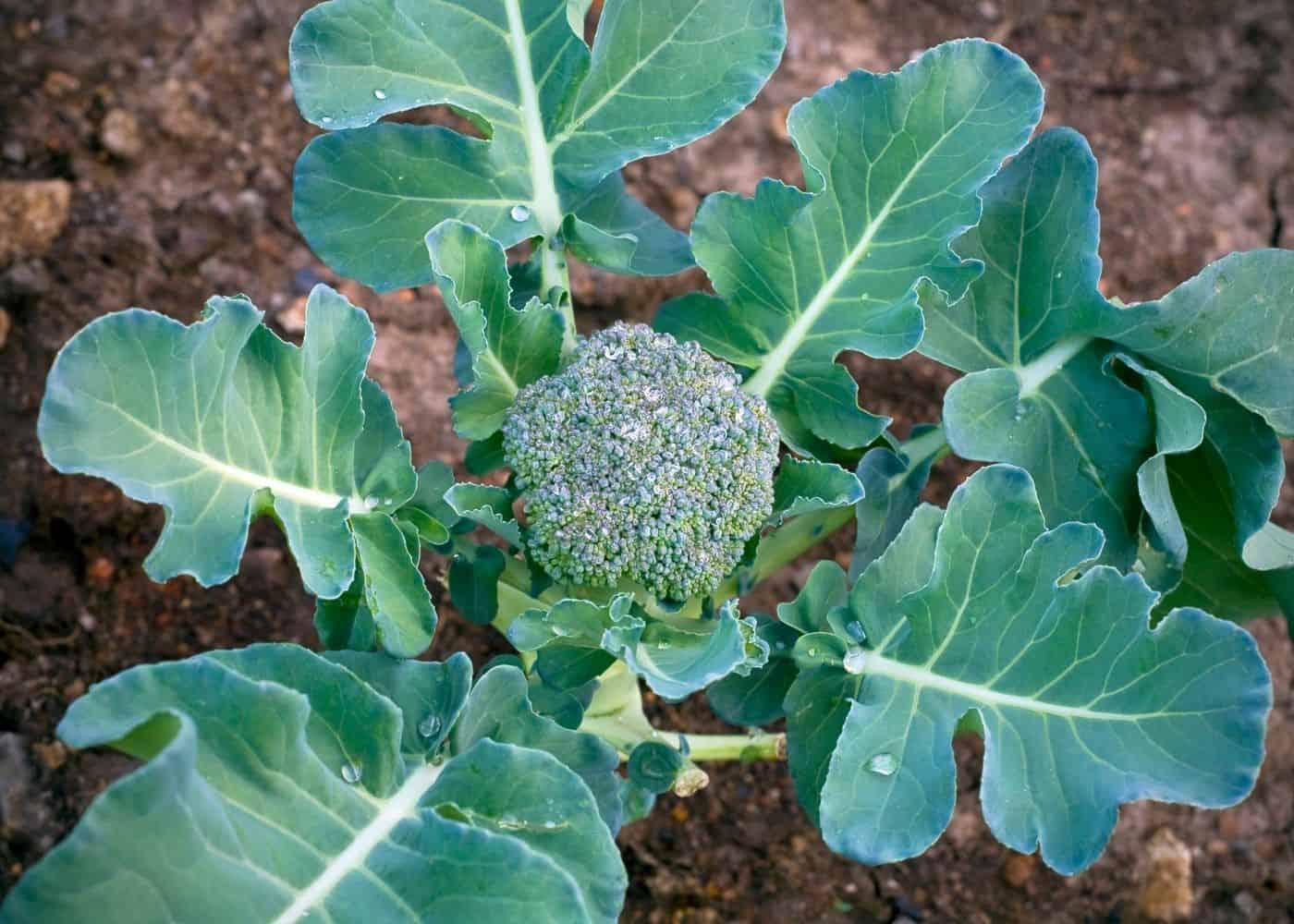
Bad companion plants to avoid planting near tomatoes
Avoid planting kale, broccoli, cauliflower, Brussels sprouts, cabbage, collards, dill, fennel, and kohlrabi near tomato plants. All plants in the brassica family (cabbage family), such as broccoli and kale, tend to be bad planting partners. Kohlrabi is a particularly harmful companion plant because it can stunt growth.
Mature dill and fennel plants can stunt tomato plant growth. Fennel and dill can also attract Swallowtail Butterflies, which lay their eggs on the plants, resulting in caterpillars that eat nearby tomatoes. Avoid planting dill and fennel near your tomato plants.


